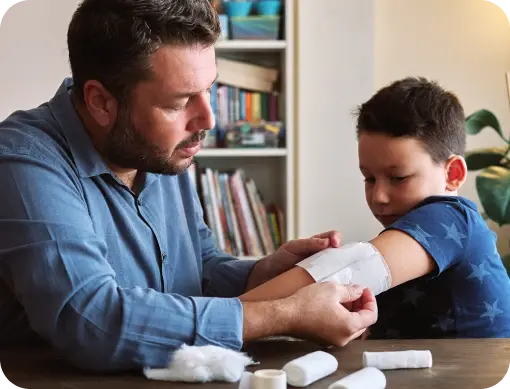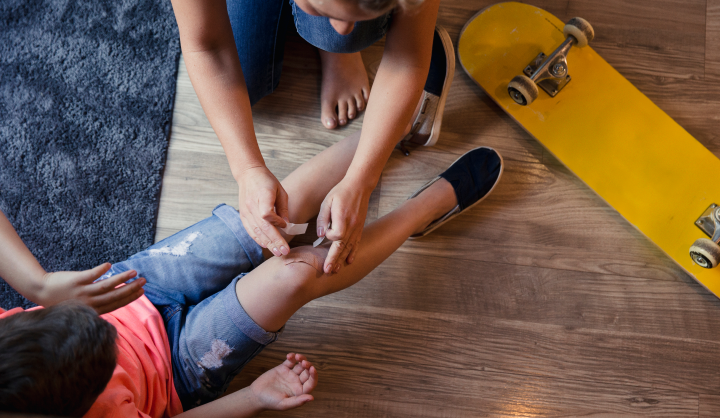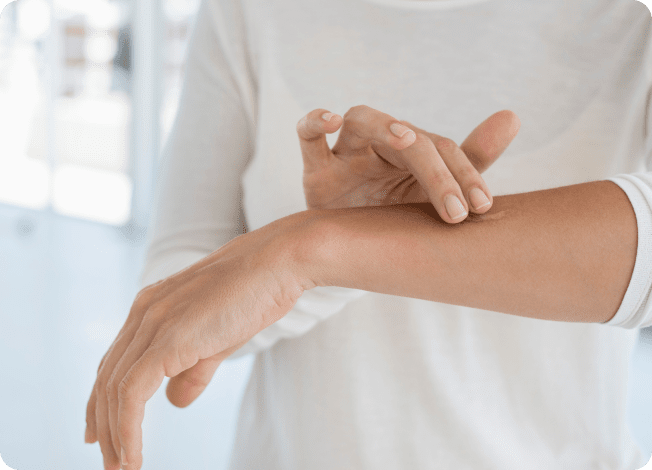Stop Infection Before It Starts
Clean
Wash your hands and the injured area with soap and water, or clean it with an antiseptic wash, then pat dry. Make sure to put on medical gloves if you’re treating someone else. Learn More about how to properly clean a wound.
Treat
Once your cut or wound has been cleaned, the next step is to apply antibiotic ointment, such as NEOSPORIN® First Aid Antibiotic Ointment. Apply a thin layer to your wound to kill bacteria and stop infection before it starts.
Protect
Protect your injury by covering it with a BAND-AID® Brand adhesive bandage or with sterile gauze and tape. Keep your wound covered—changing your bandage every day or as necessary—until it is fully healed to help reduce scabs, which in turn will help reduce scarring.

Relief for Minor Burns
Follow these steps to treat & relieve pain from small burns.
Start by gently removing any clothing covering the burn.
Run cool water over it or apply a clean, wet cloth for 10–20 minutes to help reduce pain and swelling.
After cooling, dry the burn gently and apply a layer of NEOSPORIN® + Burn Relief First Aid Antibiotic Ointment.
Protect the burn from rubbing and pressure with non-stick gauze that can be held in place with tape or wrap. Change the dressing daily.
Some burns require more care. Visit a doctor or hospital if your burn is larger than 3 inches, caused by electricity or a chemical, or if it’s on your face, hands, feet, or over a shoulder/knee joint.1

Follow-Up Care
There’s more to caring for a minor wound or injury than cleaning and covering it. You’ll want to keep an eye out for infection, look for allergic reactions, and change your bandage as you heal.
When to Call a Doctor
While most minor to moderate injuries can be effectively treated at home, some should be evaluated by medical professionals in order to prevent infection and ensure you heal properly.
Seek help for:
Cuts that are very deep, are more than ½” long, are gaping open, or have jagged edges
Puncture wounds and/or deep injuries where you suspect a bone may be broken
Injuries that cannot be properly cleaned or where glass or dirt is trapped inside
Cuts on the face, especially when close to the eyes
Bites from animals or humans
Cuts, scrapes, or burns that are not healing properly, even with routine and proper at-home care
Injuries involving metal or rust if you haven’t had a tetanus shot in the last 5 years

What Is NEOSPORIN®?
NEOSPORIN® is the #1 doctor recommended brand of topical antibiotic in the US. Discover everything you need to know about NEOSPORIN® ointments and creams with our helpful guide.



